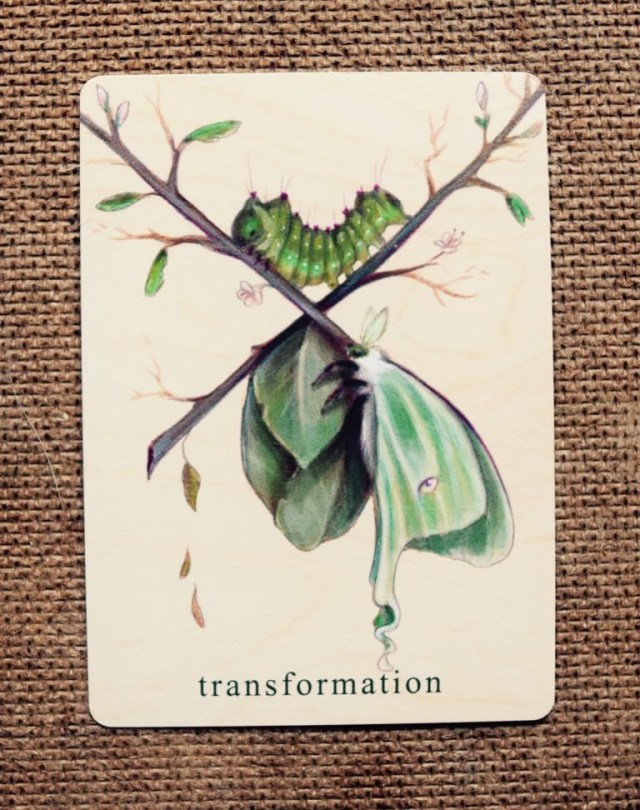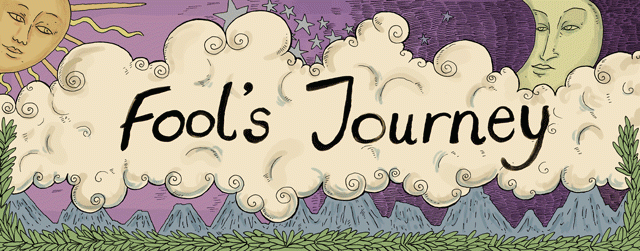
Hey there tarot lovers! Today I want to talk about something that’s kind of not-tarot-at-all: using oracle decks and other kinds of cards for cartomancy, self-exploration, advice and other tarot-like activities.
What actually is an oracle deck, and how is it different to tarot?
Oracles decks are similar to tarot, in that they are still sets of cards, each with their own symbolism and meaning. You can draw cards for advice about a situation, you can do spreads just like you can with tarot, you can pull a card a day. But oracles are separate to the system of tarot. Where a tarot deck should (really) have a numbered major arcana following a recognisable journey, plus a minor arcana with four suits, oracles are free…to be whatever they want! They can have any number of cards, ordered any way the creator likes. They don’t have to follow an established system, but can explore concepts, feelings and experiences in their own way.
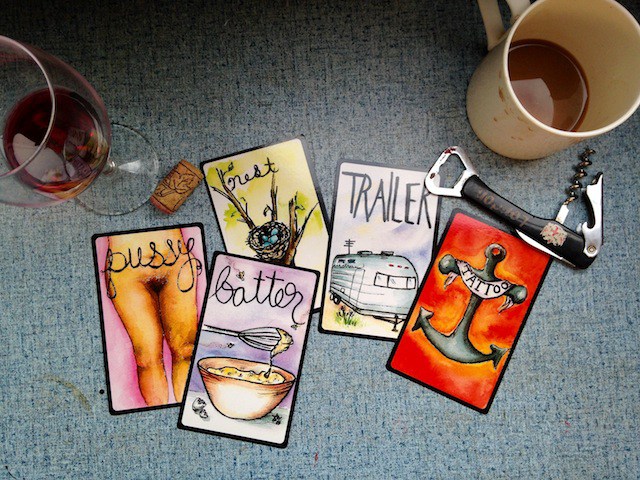
A typical oracle deck will have an image on each card, along with a single word, (though not always.) Often, they’ll come with a book that gives a deeper exploration of what that word might mean in a reading, though other decks will leave the interpretation completely up to you. I’ve seen oracle decks based on such themes as animals and their ancient meanings, crystals and their lore, energy chakras, angles, goddesses, ravens…just like tarot, the list goes on.
I’ll confess, in the past I’ve been something of a snob about oracles. Those I’d come across seemed to be all ‘angels and pastels’ (not my aesthetic at all) and filled with sentimental concepts. As someone who deeply loves the underlying systems of tarot cards, the consistent structure of the four suits, the numbers, the major and minor arcana, oracles felt… lacking. Too easy, perhaps.
Lately I’ve come across so many really beautiful, thought-provoking oracle decks that I’ve been forced to change my mind. A guest post on my own blog, which tells the story of how one oracle deck helped a young queer woman figure out their identity and boundaries (where tarot felt distant and inaccessible) sealed my appreciation and I’m ashamed of my snobbish ways. I currently own four decks — and I use them regularly.
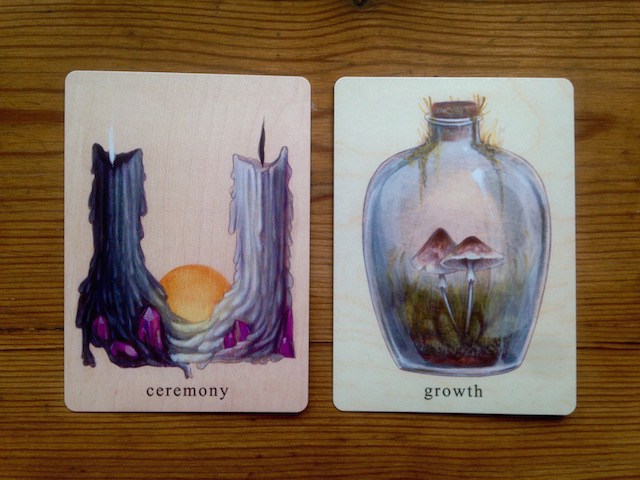
What I’ve come to really love about oracles is exactly this freedom. Freedom of creation, in that the creators can do pretty much whatever they like, free from tarot’s structure. And freedom of use, in that you don’t need to have knowledge of any system in order to use them. It’s a much more accessible form of cartomancy — less intimidating than tarot, more readily available for anyone to understand. I’ll think twice before pulling out a tarot deck among friends. Folks often have a lot of ideas and feelings about tarot which aren’t always fun to deal with, whereas an oracle deck can seem a lot ‘lighter’ (I’m not saying they necessarily are lighter, but it feels a lot easier to pull one out in mixed company than it is a tarot deck!)
A few of my favourite oracles include…
The Earthbound Oracle by AL Swartz. A deck filled with earthy symbolism – bones, crystals, feathers, decay. These have stunning illustrations and the words on each card really hit you deep. This is a powerful deck and the oracle I use most.
Dori Midnight’s Dirty Tarot by Dori Midnight. Sadly no longer in print, but I really must share this truly special deck with you as it’s queer as hell and celebrates the symbolism of all the dirty, beautiful stuff of our lives. Dori’s introduction really sums up the beauty of oracle decks:
I call this deck dirty because it is not in any way ethereal or pure; instead it is a collection of symbols of things that we have, touch, desire, or tend to in our messy lives. … I seek to righteously reclaim these symbols, to share them, and to derive beauty, meaning and essence from each. I invite you to discover your own meanings for the cards as well.
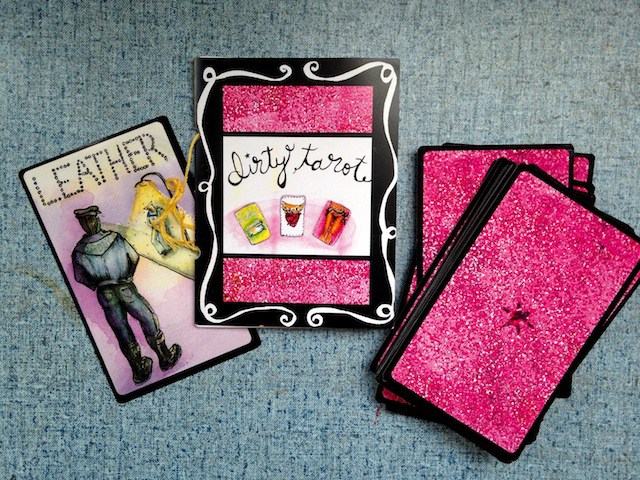
Mirrors of the Heart: A deck of favourable cards by Lily S May. Simple, hand-made cards bringing encouraging messages and gorgeous folk-style lino-cut illustrations. This is a gentle, warm deck — to me, pulling a card feels like a hug.
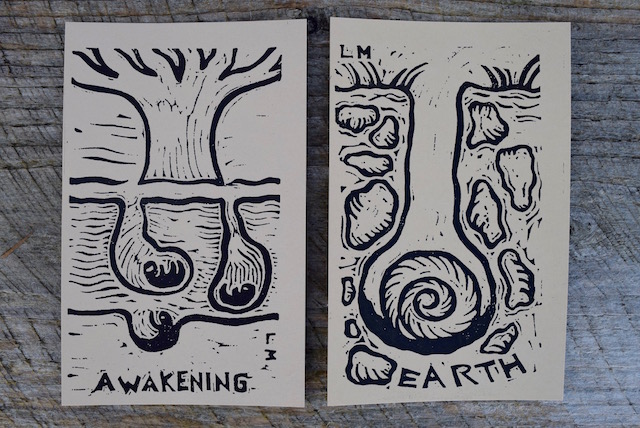
(The Original) Angel Cards. Different to the many ‘angel wisdom’ decks out there, these are tiny, almost like mini flashcards, each with a single word.
There are many decks that seem to straddle both worlds — tarot and oracle. For example, my newly-acquired Dark Goddess Tarot follows the traditional system of tarot, but has a goddess on every card. I can read with it like I would a tarot deck, or I can use it as a goddess oracle.
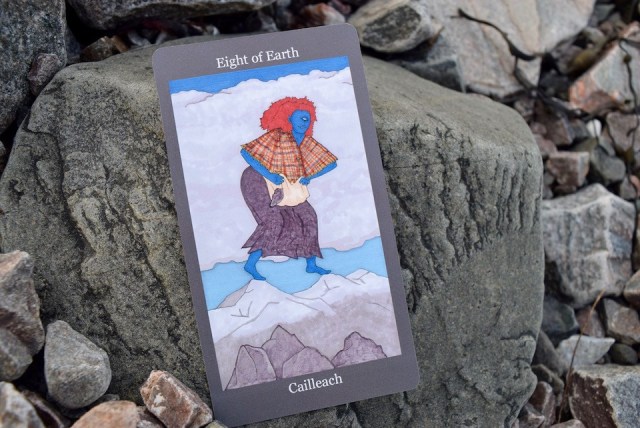
Another interesting take on this idea is a charmcasting oracle. Rather than shuffling and laying cards, you shake and cast (throw) a selection of charms. They can be read according to how and where they fall — here’s a really great article about how to create and read your own!
So, how do you use oracle decks? Here are some ideas:
Setting the scene before a group activity
My friend Barbara is a builder/teacher who often works with groups. At the start of each day on site, she gathers everyone in a circle and pulls an angel card, bearing a single word. This gives everyone present a common idea to focus on, to consider as they work. It’s a simple, beautiful practice and it’s amazing what comes up throughout the day, based on what the card meant to different participants.
If you’re a facilitator or you lead group activities, consider using a simple, non-threatening oracle deck before beginning, to establish common ground.
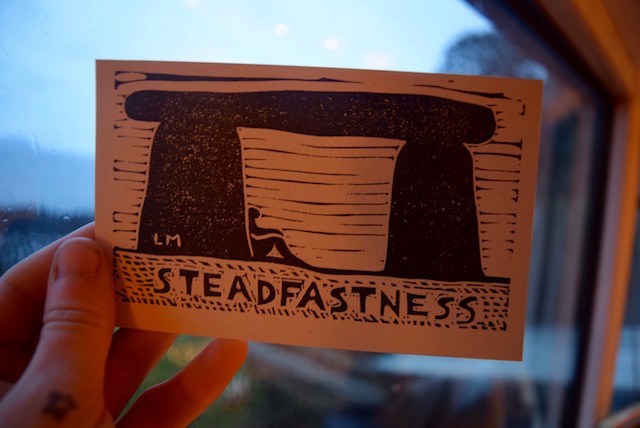
Rounding up a tarot reading
For face-to-face client readings in particular, oracles provide a great way to draw things to a close.
I’ll do a tarot reading as normal, and if it feels like the conversation could go on and on, or it’s circling, or the client is asking for ‘one more card,’ I’ll bring out the oracle deck. I’ll explain that this card is to provide context, a final word of advice, or a take-away point. Usually I’ll hand the deck to the querent and ask them to shuffle and pull a single card, and then I’ll let them interpret it for themselves.
Mix and Match
You know how sometimes you seek advice from a few different people, because you value the different perspectives? You can do the same with your cards! Often instead of doing a ‘proper tarot reading’, I’ll shuffle several different decks — perhaps one tarot, and a couple of oracles —and read the cards as a group, as if I’m chatting with three different friends.

Single card readings
Just as with a daily tarot card, you could pull a card in the morning for daily advice or for a ‘thought for the day.’ Struggling with an issue? Pull a single card and see what it advises. It’s also nice to combine this with a tarot card — if you currently do a daily draw with your tarot deck, consider adding a single oracle card to the mix.
Full spreads
There’s nothing to say you can’t use oracle cards just like tarot, in spreads (though for some reason, I never do this myself.)
Keep them with you and see what happens!
I used to carry my tarot cards with me wherever I went, so that I was always ready to give an impromptu reading or get advice when I needed it. Now that I’ve discovered oracles, however, I’ve switched! Slipping the wee Earthbound Oracle into my pocket feels like less of a weight. I find that I pull it out so much more often than I did my tarot — I’m less concerned about people’s reactions and it’s much easier to simply offer someone a card. And because they have words printed on them, it’s much easier for the recipient to do the interpretation themselves — I’m not providing a ‘reading,’ I’m simply offering a card, and the recipient takes it from there.
